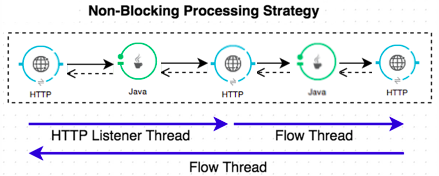- Synchronous Flow Processing Strategy

The synchronous approach is used to process messages in the same thread that initially received the message.
The synchronous strategy is ideally suited to flows where:
- The sender of the message expects a response. This is known as a "request-response" exchange pattern.
- All the steps in the flow are considered a single unit, which must succeed entirely or fail entirely.
- The flow’s inbound endpoint must be notified of all errors that occur during the processing of the message.



Comments